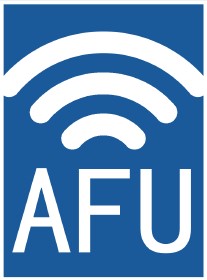Introduction
In the ever-expanding landscape of wireless communications, Single Band Pico Repeaters have emerged as a cost-effective and efficient solution for enhancing signal strength in specific frequency bands. These compact yet powerful devices are designed to amplify and rebroadcast signals within a single frequency range—making them ideal for focused coverage improvement in offices, homes, small businesses, and specialized industrial environments.
This article explores the working principles of Single Band Pico Repeaters, their advantages over multi-band solutions, key applications, and how they compare to other signal-boosting technologies. Whether you're a network operator, IT manager, or technology enthusiast, understanding these devices will help you optimize wireless performance in targeted scenarios.
How Single Band Pico Repeaters Work
Single Band Pico Repeaters operate on a straightforward yet effective principle:
Signal Reception: Captures weak signals from the donor antenna (connected to the main network source)
Amplification: Boosts the signal strength while maintaining signal integrity
Rebroadcasting: Transmits the amplified signal to the coverage area via the service antenna
Unlike full-spectrum repeaters, these devices focus on a single frequency band (e.g., 700MHz for LTE Band 12/13 or 2.6GHz for LTE Band 7), offering several technical advantages:
Higher Gain: Dedicated circuitry for one frequency improves amplification efficiency
Reduced Interference: Narrowband operation minimizes cross-band interference
Simpler Installation: No need for complex multi-band tuning
Lower Power Consumption: Typically 5-15W, suitable for PoE-powered deployments
Key Advantages Over Multi-Band Repeaters
Cost Efficiency: 30-50% lower cost than multi-band equivalents
Targeted Performance: Optimized for specific carrier frequencies
Compact Size: Often smaller than 20cm × 20cm × 5cm
Regulatory Compliance: Easier certification for single-frequency operation
Energy Saving: Typically consumes <20W versus 30-50W for multi-band units
Typical Applications
Small Office/Home Office (SOHO): Improving LTE/5G coverage in <500 sq. ft. areas
Retail Stores: Enhancing single-carrier signals for POS systems
Industrial IoT: Dedicated coverage for narrowband sensors (e.g., NB-IoT)
Rural Connectivity: Cost-effective solution for single-band LTE deployments
Emergency Communications: Rapid deployment for first responder networks
Technical Comparison
Parameter | Single Band Pico Repeater | Multi-Band Repeater |
Frequency Support | 1 band (e.g., B41 or B66) | 3-10 bands |
Max Output Power | 10-20 dBm | 20-27 dBm |
Coverage Area | <1,000 sq. ft. | 2,000-5,000 sq. ft. |
Installation Complexity | Low (1-2 hrs) | Medium (3-5 hrs) |
Typical Cost | 200−500 | 800−2,500 |
Installation Best Practices
Donor Antenna Placement: Outdoor mounting preferred for clean signal capture
Isolation Management: Maintain >30 dB isolation between donor/service antennas
Power Considerations: PoE or local DC power options
Regulatory Compliance: Follow FCC/CE output power limits
Conclusion
Single Band Pico Repeaters offer a precision tool for wireless network optimization—delivering targeted coverage improvements without the complexity and cost of multi-band systems. As networks evolve toward more specialized deployments (private 5G, industrial IoT, etc.), these focused solutions will play an increasingly important role in filling critical coverage gaps.

